  |
Bitcoin Ordinals have proven the critics wrong. The NFT-style collectibles are still going strong two years after launch — and as you might expect, degens have found an unusual way to make money from them.
It’s called “replace-by-fee (RBF) sniping,” and people who get good at it can even make tens of thousands of dollars in a single evening when market conditions and timing align perfectly.
It’s basically a sneaky way to cut in line to snap up Ordinals before anyone else. Legitimate collectors hate it, and some platforms are doing their best to stamp it out.
On the Bitcoin network, transactions wait in the mempool before they are processed, much like how commuters wait to get picked up at a bus stop. The bus arriving every 10 minutes is a new block mined by a miner.
Most people patiently wait for their turn to get on the bus, but an RBF sniper slips the driver a bit more money to get priority boarding. In the world of Bitcoin Ordinals, this means they can grab a valuable asset before someone who was waiting in line.
Cutting in line doesn’t mean stealing the assets, as the sniper still pays for them. However, the technique seems a bit unfair to many people, except for those to whom code is law. Quary, who runs Bitcoin marketplace Magisat, argues that RBF is a built-in function of Bitcoin and the cutthroat fee auction it creates is just a natural part of the network.
“Bitcoin has to assume that every participant is profit-driven and adapt the rules to accommodate that, and the market still has to be resilient to that. This is exactly how Bitcoin works,” he says.
In the first half of the year, when there were only about five snipers, Quary could earn up to two BTC on a good night. Nowadays, the earnings are divided among more snipers.
An indecent proposal


Quary offered to send me 0.05 BTC to learn the ways of an RBF sniper. I agreed in the name of science, however, with the proviso that if I made money, I’d donate the profits to charity; if I lost, I’d just return what was left.
Spoiler alert: It’s a lot harder than it sounds, and no charity benefited much from this story.
What I learned was that cutting in line to grab an item first doesn’t guarantee easy gains. The fees stacked up, the market moved quickly, and I often ended up stuck with assets no one wanted unless I sold at a loss.
Near the end of the experiment, I was down to just 0.017 BTC and held two assets no one wanted to buy. But when I least expected it, an unknown trader snapped up my Based Angels for 0.03 BTC.
What initially looked like a slick and easy way to make fast profits ended up being just another risky bet where I was saved from total failure with a last-minute purchase.
Quary still agreed to donate 0.01 BTC to a cause of his choosing, but the grand profit I hoped for never really happened.
Meanwhile, some NFT marketplaces have started launching updates to crack down on the niche practice, with Magic Eden recently pulling the trigger on safeguards.
How Bitcoin RBF snipers go about their trade
So, how do RBF snipers identify an asset to snipe on Ordinals marketplaces?
The first step is to identify a pending transaction on a marketplace, which means they can be sniped. How these transactions are presented varies by platform, but they’re usually labeled pretty clearly.
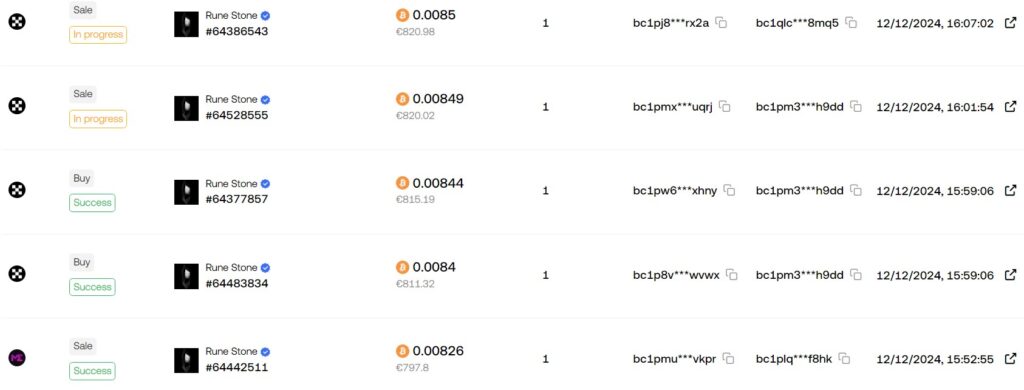

Some snipers build their own scripts or bots, while those without the technical know-how head to platforms like Magisat.
On these platforms, snipers choose how much more in transaction fees to pay to cut the line, and if successful, they claim the asset. From the original buyer’s perspective, they would make a purchase on Bitcoin marketplaces, but their transactions will not finalize.
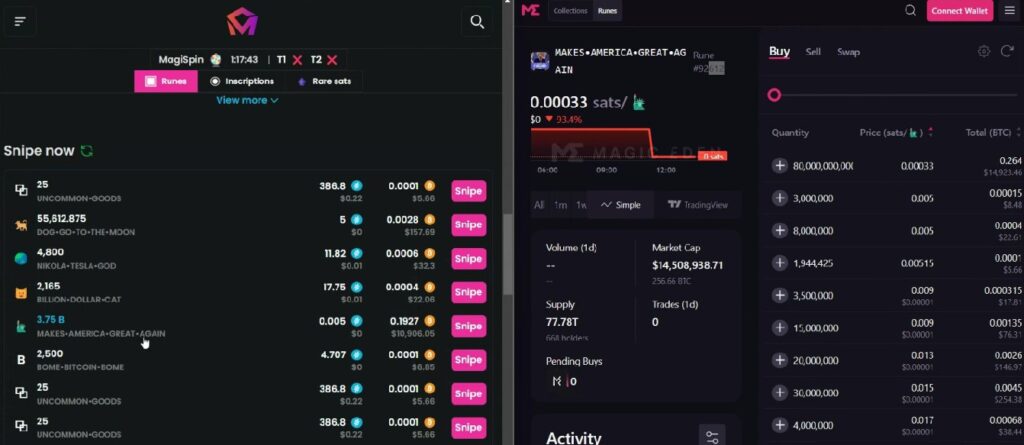

One of the first items I sniped was a Bitcoin Frog in a transaction that cost nearly 0.033 BTC. I listed the item back, but it didn’t sell over the next 24 hours, and Quary bailed me out by buying it himself.
“We should play with [liquid] collections because those can be flipped immediately, and we’re not speculating over the price. Get the sniping profits, then list them a little bit higher and cash in some money,” Quary said.
Read also
Features
Thailand’s Crypto Utopia — ‘90% of a cult, without all the weird stuff’
Features
‘Deflation’ is a dumb way to approach tokenomics… and other sacred cows
If you don’t have a benefactor to bail you out, like I did, you would have just spent $3,325 on an illiquid frog, highlighting the risks for inexperienced players.
Having learned to only snipe more liquid collections, flipping the assets immediately for a slightly higher value wasn’t so difficult to do, and the assets often sold immediately. But my Bitcoin balance kept falling as the transaction fees stacked up. If I listed the items at higher prices to account for fees, I had trouble offloading them.
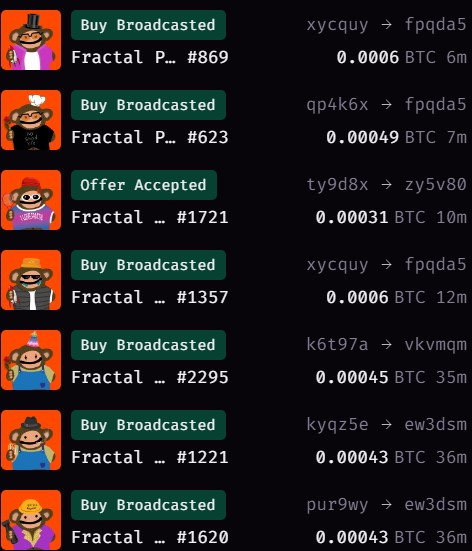

Once, I sniped a Fractal Puppet for 0.00175 BTC. But once I listed it for resale, the floor price took a sudden dive. I even lowered my listing price a few times out of desperation, but still, no one bought it.
At one point, my wallet balance had dropped to around 0.015 BTC, with a bunch of assets I couldn’t offload as their prices dropped.
When I asked my trainer for advice, his response was simple: “Usually, I just hold them to zero.”
It looked very much like I was going to lose all of my funds. On the upside, it’s probably a valuable warning to readers who can’t afford to risk that kind of cash.
How veteran RBF snipers actually make a profit
Who snipes the snipers? I don’t know, but getting sniped yourself is an extremely frustrating experience. In hours of high online activity, it almost felt impossible to snipe anything without getting sniped myself.
I requested an RBF transaction and moved back to another web browser tab. When I came back to it, I realized that my transaction had been replaced by another sniper. How unfair!
One evening, I spotted an asset with a pending sale in the mempool, and its floor price was higher than what the potential buyer offered it for.
This occurred very frequently, even in instances when I raised the fee offer much higher than the transaction in the mempool.
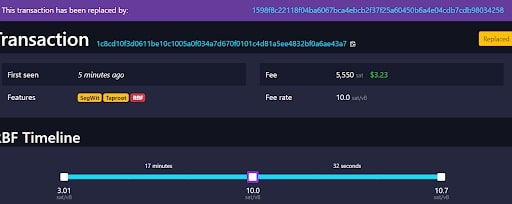

Experienced snipers are much more strategic, Quary says, while sharing several transactions of fee wars he participated in.
In one instance, Quary spotted a Bitcoin Frog that the seller had accidentally listed for 0.04 BTC instead of 0.4 BTC. A sniping bot instantly attempted to buy it but entered a bidding war with Quary, who ended up claiming it for around $3,700 while paying an additional $1,300 in fees. He was able to flip it for $17,000, blockchain records show.
“Once you hit ‘Sell,’ there’s nothing you can do if you fat finger it. Bots and snipers will be all over it,” he says.
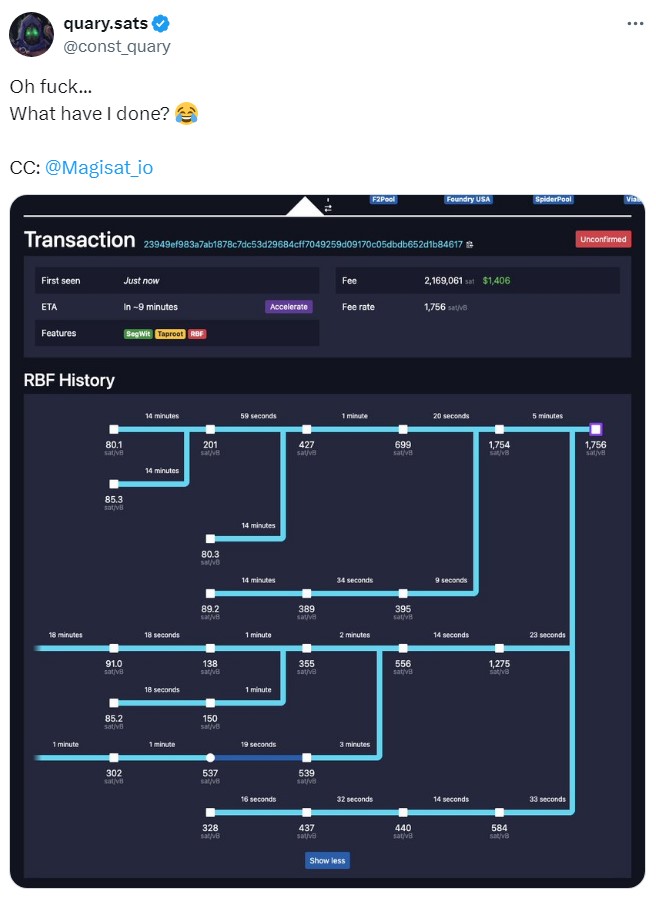

Snipers ruin Bitcoin Ordinals and Runes sweepstakes
Bitcoin-based NFTs like Ordinals have recorded the highest annual transaction volume in the industry (as of mid-December).
According to NFT data provider CryptoSlam, Ethereum-based NFTs recorded around $2.8 billion in transaction volume since January 2024 (down from almost $5 billion the previous year). Throughout the same period, Bitcoin Ordinals and BRC-20s saw $3 billion in trades.
Magic Eden is seen as the go-to platform for Bitcoin assets trading, according to Quary. Snipers often go there to search for pending Ordinals and Runes transactions. But the rampant sniper activity has created a bad user experience for Magic Eden customers, and the platform’s latest update attempts to get rid of sniper activities.
Read also
Features
Are You Independent Yet? Financial Self-Sovereignty and the Decentralized Exchange
Features
What Solana’s critics get right… and what they get wrong
“It was like nonstop,” Elizabeth Olson, head of Bitcoin marketing at Magic Eden, says, responding to questions about whether the platform was receiving user complaints about snipers.
“All the sniping back and forth is really inefficient use of our users’ fees, essentially. Those are all just going to miners, and it’s just sucking out of the ecosystem. I think that’s one thing that we’re also excited about as well is just keeping in the family.”
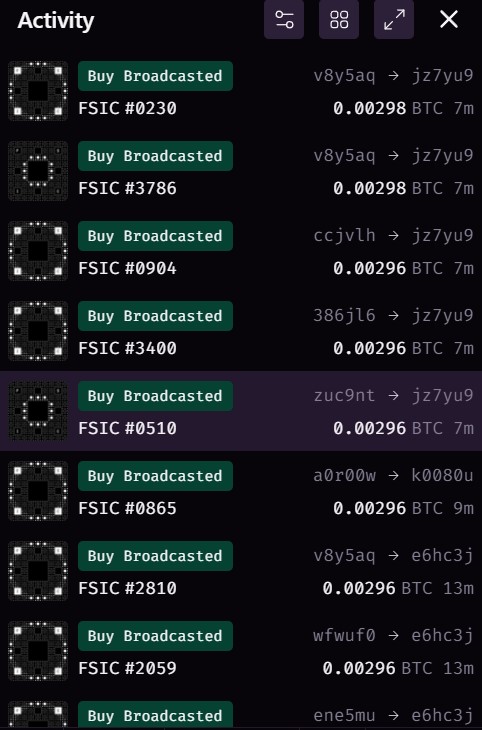

Aside from the obvious UX problems for customers, snipers undermine legitimate users from employing a sweeping strategy in a collection. That’s when a trader buys a lot of NFTs from a particular collection.
Sweeping often removes the cheapest assets of a collection from the market, effectively leaving higher-priced listings and raising the collection’s floor price. This can be a strategic play as the sweeper can target large profits from the bulk buys.
“A big part for us is that a lot of our users like to do sweeps,” Matthew Swetz, head of Bitcoin product at Magic Eden, says. “If I go to the mempool to sweep 20 items, and if a sniper proposes a higher fee on just one of those items, the entire sweep falls apart.”
“If things get to the mempool, and there’s like an economic war on fees and not actually the price of the asset, then the economics get misincentivized,” Swetz says.
To counter snipers, Magic Eden pushed an update so that only pre-approved buyers can pay for the item. Swetz calls this update one of the most complex things their team has worked on.
To simplify things, think of it as making a guest list for a private art auction instead of letting everyone in the neighborhood show up.
This list is made using a Merkle tree. A Merkle tree is just a fancy structure that uses hashing to securely summarize a bunch of items. It lets you prove something is included without showing everything.
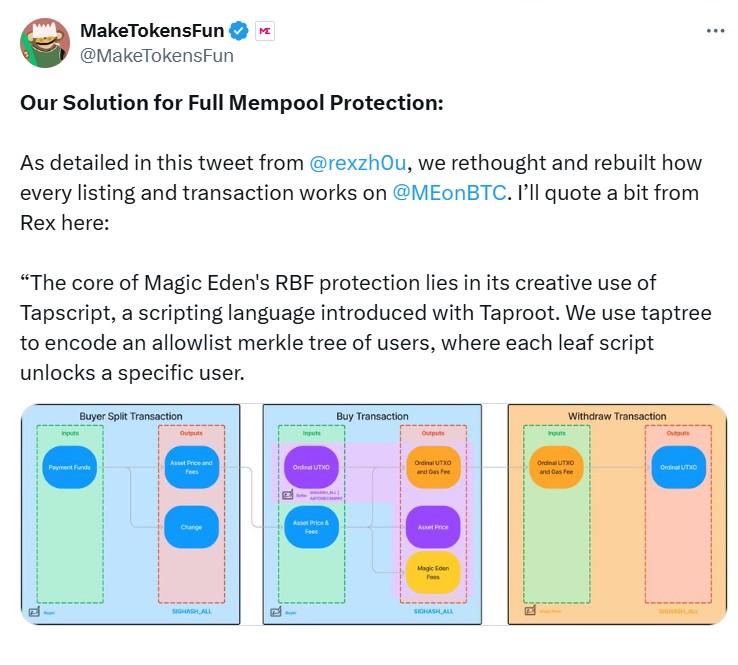

Next, instead of processing the entire sale in one go, they split it into three smaller transactions. In the first two transactions, the asset goes to a multisig address in the Merkle tree, while the buyer pays the seller. The third transaction is when the buyer withdraws the asset. It also triggers the other two through the mempool at the same time, preventing snipers from swiping it.
“By having the fee really in that third transaction, what we’re able to do is push all three of these together through the mempool at the same time. And because the Ordinal is moving through that Merkle tree signature scheme, no one can come in and snipe it,” Swetz says.
Read also
Features
The FBI’s takedown of Virgil Griffith for breaking sanctions, firsthand
Features
Advanced AI system is already ‘self-aware’ — ASI Alliance founder
Holding my Ordinals buys to zero


My short and unsuccessful career as an RBF sniper came to an end as Magic Eden curbed sniper activity on its platform. But snipers can still find targets on rival markets.
For example, on Dec. 9, OKX had 3,275 Ordinals transactions, just a tad less than 3,333 on Magic Eden, according to Dune Analytics data.
“There will always be snipers or a component of sniping because not all platforms will want to become escrows for the transactions,” Quary says.
On Dec. 10, the remaining 0.01 BTC from Quary’s investment in training me was donated to Open Ordinals Institute, a nonprofit dedicated to the development of the Bitcoin Ordinals protocol.
I am still the owner of Fractal Puppet 75682950, which I may end up holding to zero. The collection’s floor price has dropped to 0.000049 BTC on Magic Eden.
Subscribe
The most engaging reads in blockchain. Delivered once a
week.




Yohan Yun
Yohan Yun is a multimedia journalist covering blockchain since 2017. He has contributed to crypto media outlet Forkast as an editor and has covered Asian tech stories as an assistant reporter for Bloomberg BNA and Forbes. He spends his free time cooking, and experimenting with new recipes.
Read also
Asia Express
$308M crypto laundering scheme busted, Hashkey token, Hong Kong CBDC: Asia Express
ZhiyuanSun
5 min
November 2, 2023
Asia Express: Ringleaders of $308M P2P crypto laundering scheme jailed in China, Visa’s Hong Kong CBDC trial a success, Hashkey token.
Read more


Hodler’s Digest
Coinbase frenzy, DOGE dazzles, Bitcoin breaks records, Jim Cramer sells: Hodler’s Digest, April 11–17
Editorial Staff
9 min
April 17, 2021
The best (and worst) quotes, adoption and regulation highlights, leading coins, predictions and much more — one week on Cointelegraph in one link!
Read more


